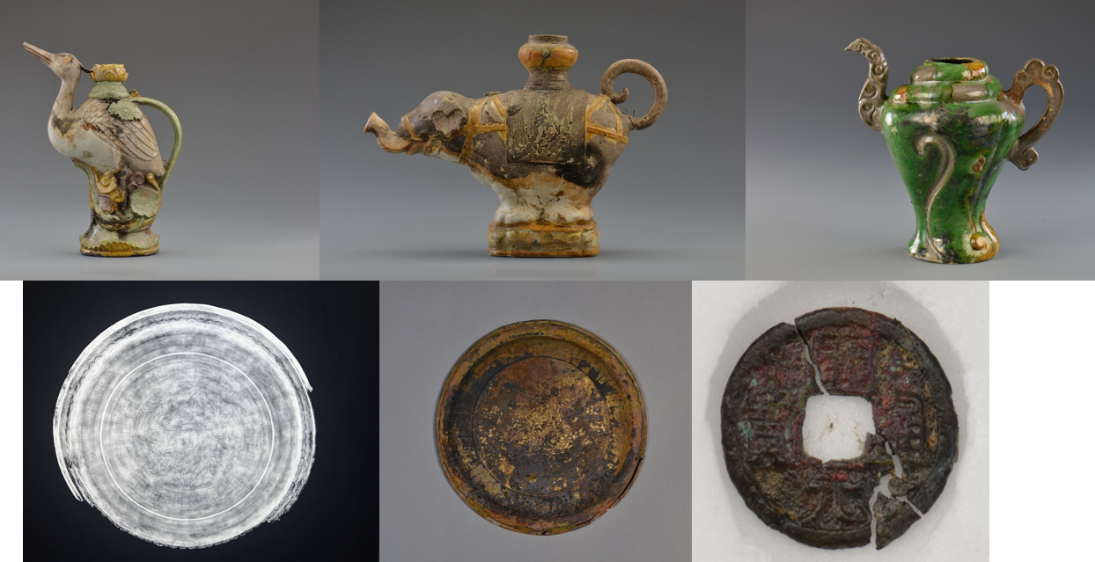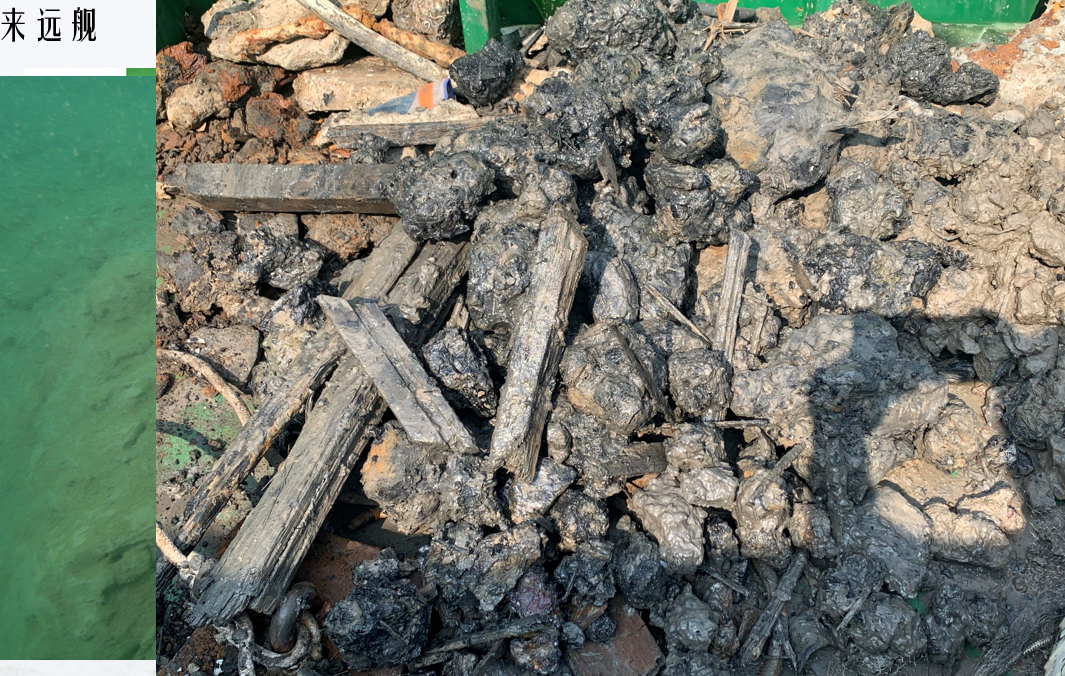
Editor's note: This is the fifth article of a series covering the discovery of two Ming Dynasty shipwrecks in the South China Sea. CGTN will write more about the topic according to the archaeological research progress. You can find the previous pieces here.
At a depth of approximately 1,500 meters under the South China Sea, a new batch of relics were found with stories of the mysterious ancient Silk Road.
China on Thursday released nearly 580 pieces of relics which reveal details of two world-class archaeological discoveries, two ancient shipwrecks from the Ming Dynasty (1368-1644) found in the South China Sea.
The two shipwrecks, located approximately 150 kilometers southeast of Sanya, South China's Hainan Province, were first discovered last October after about 500 exploratory dives.
On Thursday, the National Cultural Heritage Administration (NCHA) unveiled the cultural relics during a press conference.
The archaeologists secured a haul of cultural relics that include timber, antlers and various pottery and ceramic items, such as blue-and-white porcelain jars and dishes, dating back about 500 years.
The relics, which include porcelain, pottery, and timber, provide concrete evidence that Chinese ancestors explored, utilized, and traded in the South China Sea, said the administration at a press conference.
So far, a two-phase deep-sea archaeological survey was conducted from May to June and from September to October in 2023. A third phase is scheduled for March to April 2024.

A group of pieces of cultural relic unearthed from the No. 1 shipwreck site in the South China Sea. /CMG
A group of pieces of cultural relic unearthed from the No. 1 shipwreck site in the South China Sea. /CMG
Evidence of the ancient Silk Road
The NCHA said the two ancient shipwrecks are important evidences of trade and cultural exchanges along the ancient Maritime Silk Road.
They were identified as being from the Ming Dynasty and were later named the No. 1 and No. 2 shipwrecks near the northwest continental slope of the South China Sea.
Chinese experts extracted 543 pieces of cultural relics from the No. 1 shipwreck site, and 36 relics from the No. 2 shipwreck site, China Media Group (CMG) reported.
The No. 1 shipwreck mainly contains porcelain wares, roughly more than 100,000 pieces dating back to the reign of the Zhengde Emperor (1505-1521) of the Ming Dynasty.
The No. 2 shipwreck largely contains a large number of logs of wood, most of which have been processed. Through a preliminary study, it was determined that the ship was loaded with cargo and had sailed from overseas to China. It dates back to the reign of the Hongzhi Emperor (1487-1505) of the Ming Dynasty.
The discoveries provide solid historical evidences of the ancient Silk Road.
The relatively well-preserved wrecks contain a large number of cultural relics of important historical, scientific and artistic values.
The discovery is not only a major breakthrough for China's deep-sea archaeology, but also a significant archaeological discovery on a global level.
It vividly resurrects the prosperous maritime trade during the mid-Ming Dynasty, serving as a crucial testament to China's ancient Maritime Silk Road trade and cultural exchanges.
Sun Jian, deputy director of the archaeological research center under the NCHA, told CMG that "the types of cultural relics found are rich, judging by all the underwater archaeology we have done. The quantity is huge not only in the types of ware but also in the categories of porcelain."
The discovery demonstrates the historical facts of the development, utilization, and traveling in the South China Sea by China's ancestors, and has contributed to China's maritime history, ceramic history, overseas trade history, and maritime Silk Road research.
It also marks that China's deep-sea archaeology has reached the world's advanced level.
"In the past, our strength could not reach there. But with the help of China's advances in marine science and technology , we can find the wreck site at the depth of more than 1,000 meters. It is a global discovery and a breakthrough," said Sun.

The wreck of the warship Laiyuan discovered in Weihai Bay, east China's Shandong Province. /CMG
The wreck of the warship Laiyuan discovered in Weihai Bay, east China's Shandong Province. /CMG
More discoveries
Thursday's press conference also reported progress on the underwater archaeological exploration of other sites like a shipwreck of the Yuan Dynasty (1271-1368) in east China's Fujian Province.
The Yuan Dynasty shipwreck off the ancient port city of Zhangzhou on Shengbeiyu Island, Fujian Province, lies at a depth of approximately 30 meters.
The wooden ship structure is nicely preserved and neatly stacked cargo piles were found in its main area, covering an area of about 300 square meters, CMG reported.
It is one of the shipwrecks showcasing the thriving Maritime Silk Road during the late Yuan Dynasty.
In addition, the wreck of the warships Dingyuan, Jingyuan, and Laiyuan have been successively discovered in Weihai Bay since 2017, along with artifacts such as two boxes of gun shells from the wreck of the warship Dingyuan and silver spoons bearing the name "Laiyuan," according to CMG.
The water depth of the shipwrecks in Weihai Bay ranges from 6 to 10 meters, and the site area ranges from 850 to 2,100 square meters.
They were buried 0.5 to 3 meters under sea mud. No complete ship hull has been found, and the only remaining relics are scattered, CMG reported.